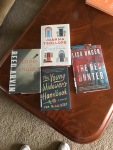School is back in session here in Western Kentucky. I love this time of year, although I recall it used to start in September. I may have mentioned, I loved going to school! I loved it so much that I was still going until I was almost 35 years old and then my husband went back to school, so I lived the dream vicariously through him until he finished seminary, through my children–hockey, football games, marching band contests and parades, through my grandchildren, soccer, baseball, essays, cheerleading, basketball.
Summer is drawing to a close. Teachers somewhere are assigning written essays. So here I am looking back on what I read this summer. You know the old saying, “A Day without a Book is….something I have no clue about.’ Reading has taken me everywhere, made me a time traveler, captured and held me in awe. SO
WHAT HAVE I READ THIS SUMMER?
Dis
Fiction:
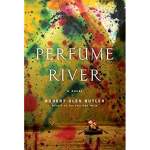 1. ⭐️⭐️⭐️⭐️⭐️Perfume River, Butler—By far the best fiction book I read this summer. The author is a professor of creative writing at Florida State University. His capture of generational family dynamics and the decisions made, the words spoken and the secrets kept beginning with the protagonist facing his nightmares of Hue, Vietnam and his father’s imminent death delivers an emotional wallop…but then there is homeless Bob and the protagonist’s brother who defied their father escaping to Canada to avoid the draft. Complex, but aren’t all families. Terry and I had deep discussions about this book and the characters which were delightful.
1. ⭐️⭐️⭐️⭐️⭐️Perfume River, Butler—By far the best fiction book I read this summer. The author is a professor of creative writing at Florida State University. His capture of generational family dynamics and the decisions made, the words spoken and the secrets kept beginning with the protagonist facing his nightmares of Hue, Vietnam and his father’s imminent death delivers an emotional wallop…but then there is homeless Bob and the protagonist’s brother who defied their father escaping to Canada to avoid the draft. Complex, but aren’t all families. Terry and I had deep discussions about this book and the characters which were delightful.
2. ⭐️⭐️⭐️⭐️The Chilbury Ladies Choir, Jennifer Ryan—A book set in 1940 Great Britain as men march off to war and women are left to carry on and support the war effort. Told by different characters from young to mature in a series of letters and journal entries. The only WW2 book I read this summer, believe it or not. Terry loved this one also.
3. ⭐️⭐️⭐️⭐️A Murder in Time, Julie McElwain
4. ⭐️⭐️⭐️The Practice House, Laura McNeal 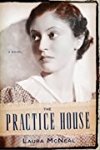
5. ⭐️⭐️⭐️The Book of Polly, Kathy Hepinstall
Books in an established series: Suggest that if you want to read any of these author’s series that you start with earlier book in the series. I highly recommend any of these authors but especially Nesbo, Iles, and Silva, but I enjoy all of them.
⭐️⭐️⭐️⭐️⭐️The Thirst, Jo Nesbo–Norwegian author–First book in Harry Hole Series is THE BAT
⭐️⭐️⭐️⭐️⭐️Mississippi Blood, Third book in a trilogy set in and around Natchez, MS, Greg iles First Book in this trilogy is NATCHEZ BURNING, but Penn Cage, the protagonist and his family are in earlier Iles Books.
⭐️⭐️⭐️⭐️Garden of Lamentations, a Duncan Kincaid and Gemma Jones Novel, Deborah Crombie
⭐️⭐️⭐️The Likeness, Dublin Police Squad 2, Tana French
⭐️⭐️⭐️⭐️⭐️House of Spies, Daniel Silva
Non-Fiction: Devotional, Inspirational, Memoir
⭐️⭐️Hallelujah Anyway. Anne LaMott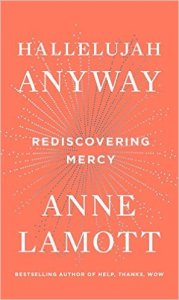
Audio books: What we have listened to in the car—Listed in order of preference. Highly recommend any of these. Good stories, Good narrators
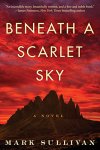 ⭐️⭐️⭐️⭐️⭐️🌟Beneath the Scarlet Sky, Mark Sullivan—A large portion of this book is fact taken from interviews with some of the principals and also much research by the author, some that went on after the book was completed. Some of it is the author’s imagining of conversations, transitions, etc. Once again a little known story of heroism, war, and love. Well worth listening to or reading. It is set in Italy beginning in May 1944 in the city of Milan. Mussolini has lost his grip on Italy and lives with his mistress in a fortress castle protected by the Nazis who have invaded and placed what they hold of Italy under German military law. The Allies are invading south and at the beginning of the book the first Allied assault of Milan from the skies occurs. Pino Lela is a 17 year old boy who loves music, women, and movies. His heroism saved multiple lives, but could not save all the ones he loved. Worth the listen or the read.
⭐️⭐️⭐️⭐️⭐️🌟Beneath the Scarlet Sky, Mark Sullivan—A large portion of this book is fact taken from interviews with some of the principals and also much research by the author, some that went on after the book was completed. Some of it is the author’s imagining of conversations, transitions, etc. Once again a little known story of heroism, war, and love. Well worth listening to or reading. It is set in Italy beginning in May 1944 in the city of Milan. Mussolini has lost his grip on Italy and lives with his mistress in a fortress castle protected by the Nazis who have invaded and placed what they hold of Italy under German military law. The Allies are invading south and at the beginning of the book the first Allied assault of Milan from the skies occurs. Pino Lela is a 17 year old boy who loves music, women, and movies. His heroism saved multiple lives, but could not save all the ones he loved. Worth the listen or the read.
From Amazon: A Goodreads Best Book of the Month
“Exciting…taut thriller…Beneath a Scarlet Sky tells the true story of one young Italian’s efforts to thwart the Nazis.” —Shelf Awareness
“Meticulous research highlights this World War II novel of a youth growing into manhood…a captivating read…” —RT Book Reviews
“An incredible story, beautifully written, and a fine and noble book.” —James Patterson, New York Times bestselling author
“Sprawling, stirring, like the richest of stories, and played out on a canvas of heroism and tragedy, Beneath a Scarlet Sky is like one of those iconic World War II black and white photos: a face of hope and tears, the story of a small life that ended up mattering in a big way.” —Andrew Gross, New York Times bestselling author of The One Man
“Action, adventure, love, war, and an epic hero—all set against the backdrop of one of history’s darkest moments—Mark Sullivan’s Beneath a Scarlet Sky has everything one can ask for in an exceptional World War II novel.” —Tess Gerritsen, New York Times bestselling author of Playing with Fire
“This is full-force Mark Sullivan—muscular, soulful prose evincing an artist’s touch and a journalist’s eye. Beneath a Scarlet Sky conjures an era with a magician’s ease, weaving the rich tapestry of a wartime epic. World War II Italy has never been more alive to me.” —Gregg Hurwitz, New York Times bestselling author of The Nowhere Man
“Beneath a Scarlet Sky has everything—heroism, courage, terror, true love, revenge, compassion in the face of the worst human evils. Sullivan shows us war as it really is, with all its complexities, conflicting loyalties, and unresolved questions, but most of all, he brings us the extraordinary figure of Pino Lella, whose determination to live con smania—with passion—saved him.” —Joseph Finder, New York Times bestselling author of Suspicion
⭐️⭐️⭐️⭐️Home, Matt Dunn
⭐️⭐️⭐️⭐️The Woman on the Orient Express, Jayne Lindsey Ashford–fictionalized account of Agatha Christie’s journey on the Orient Express after her mysterious disappearance and divorce from Archie..an excellent listen and sent me searching out more about Agatha.
⭐️⭐️⭐️⭐️The Lake House, Kate Morton
⭐️⭐️⭐️⭐️Camino Island, John Grisham
⭐️⭐️⭐️The Ladies Room, Carolyn Brown
⭐️⭐️⭐️The Late Show, Michael Connelly
Terry and I joined a book club—Listed in order read for Book Club
1. MAY—Victoria, A Novel of a Young Queen, Daisy Goodwin—Historical Fiction Excellent account of a young queen and her relationship with her Prime Minister and later with the man who would be her husband….also a PBS series.
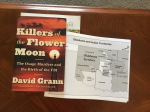 2. JUNE—⭐️⭐️⭐️⭐️⭐️💥🌟The Killing of the Flower Moon, David Grann—Nonfiction History—NUMBER ONE for this summer. If you come from Oklahoma which I do, you were required back in the day, at least as far back as my daughter’s day, to take Oklahoma History to graduate from high school. I SWEAR I made an A in that class and yet never knew this bit of history. I lived in Tulsa, OK 27 years before we moved to Kentucky….Tulsa County butts up against Osage County, the Osage Hills. In the early part of the 20th Century the Osage Indians were the wealthiest people per capita in the world. Oil, black gold and the fore thought to retain all rights to underground reservation, made those with head rights and their descendants wealthy. Sometime in the early 1920’s mysterious deaths began to wipe out whole families. Enter J. Edgar Hoover and his new FBI to investigate. A conspiracy that reached enormous proportions began to be uncovered. This book grabbed me from the beginning but it took Terry a little longer to get into it. Nevertheless, he loved it. As he closed the book, he looked over at me and said, ‘It was genocide and no one ever told me about this.’
2. JUNE—⭐️⭐️⭐️⭐️⭐️💥🌟The Killing of the Flower Moon, David Grann—Nonfiction History—NUMBER ONE for this summer. If you come from Oklahoma which I do, you were required back in the day, at least as far back as my daughter’s day, to take Oklahoma History to graduate from high school. I SWEAR I made an A in that class and yet never knew this bit of history. I lived in Tulsa, OK 27 years before we moved to Kentucky….Tulsa County butts up against Osage County, the Osage Hills. In the early part of the 20th Century the Osage Indians were the wealthiest people per capita in the world. Oil, black gold and the fore thought to retain all rights to underground reservation, made those with head rights and their descendants wealthy. Sometime in the early 1920’s mysterious deaths began to wipe out whole families. Enter J. Edgar Hoover and his new FBI to investigate. A conspiracy that reached enormous proportions began to be uncovered. This book grabbed me from the beginning but it took Terry a little longer to get into it. Nevertheless, he loved it. As he closed the book, he looked over at me and said, ‘It was genocide and no one ever told me about this.’
From Amazon: An Amazon Best Book of April 2017: In the 1920s, the Osage found themselves in a unique position among Native Americans tribes. As other tribal lands were parceled out in an effort by the government to encourage dissolution and assimilation of both lands and culture, the Osage negotiated to maintain the mineral rights for their corner of Oklahoma, creating a kind of “underground reservation.” It proved a savvy move; soon countless oil rigs punctured the dusty landscape, making the Osage very rich. And that’s when they started dying.
You’d think the Osage Indian Reservation murders would have been a bigger story, one as familiar as the Lindbergh kidnapping or Bonnie and Clyde. It has everything, but at scale: Execution-style shootings, poisonings, and exploding houses drove the body count to over two dozen, while private eyes and undercover operatives scoured the territory for clues. Even as legendary and infamous oil barons vied for the most lucrative leases, J. Edgar Hoover’s investigation – which he would leverage to enhance both the prestige and power of his fledgling FBI – began to overtake even the town’s most respected leaders.
Exhuming the massive amount of detail is no mean feat, and it’s even harder to make it entertaining. But journalist David Grann knows what he’s doing. With the same obsessive attention to fact – in service to storytelling – as The Lost City of Z, Killers of the Flower Moon reads like narrative-nonfiction as written by James M. Cain (there are, after all, insurance policies involved): smart, taut, and pacey. Most sobering, though, is how the tale is at once unsurprising and unbelievable, full of the arrogance, audacity, and inhumanity that continues to reverberate through today’s headlines. –Jon Foro, The Amazon Book Review
Review
“The best book of the year so far.”
—Entertainment Weekly
“A marvel of detective-like research and narrative verve.”
—Financial Times
“A shocking whodunit…What more could fans of true-crime thrillers ask?”
—USA Today
“A master of the detective form…Killers is something rather deep and not easily forgotten.”
—Wall St. Journal
“Extraordinary”
—Time Magazine
3. JULY—The Other Einstein, Marie Benedict—Historial Fiction Do you know about the first Mrs. Albert Einstein, who was also a brilliant physicist and who probably contributed the mathematics for the 1905 Einstein paper that eventually won him the Nobel Prize?
4. AUGUST—A Thousand White Women, Jim Fergus –Period Fiction
I have read a couple of others, but these are the ones that stand out. SO tell me. I am always looking for a new read or listen, WHAT HAVE YOU READ THIS SUMMER?

